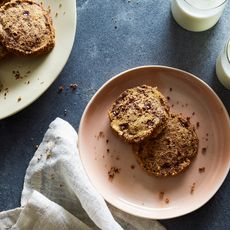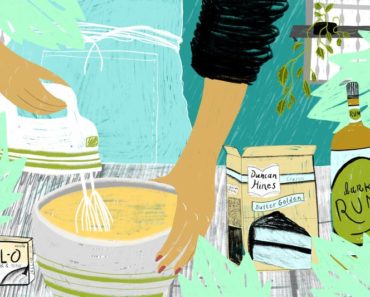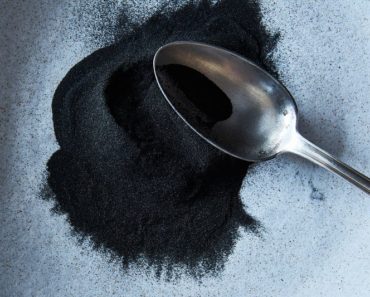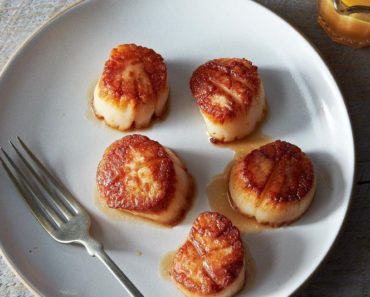If you’ve been anywhere near the internet in the past few months, you’ve seen Alison Roman’s Salted Butter Chocolate Chunk Shortbread. They are round and thick, with sugary, glittery edges and big flakes of salt. Chocolate chip cookies that don’t want to be called chocolate chip cookies. Those, Roman writes, she has always found “to be deeply flawed…too sweet, too soft, or with too much chocolate.” These are her upgrade. On Instagram, she lovingly calls them “The Cookies,” assuming we know what she’s talking about. And, of course, we do.
A post shared by Alison Roman (@alisoneroman) on Feb 14, 2018 at 11:14am PST
In January, Bon Appétit—where Roman used to work and still contributes—declared: “EVERYONE Is Making These Chocolate Chunk Shortbread Cookies.” Everyone. “So you probably should, too.” The New York Times called them “wildly popular.” Deb Perelman at Smitten Kitchen also excitedly leapt on board: “buttery, so buttery.” Mind you, these articles were all written right after the release of Roman’s much-anticipated debut cookbook, Dining In. People republished the recipe—pretty photos included—but didn’t ask many questions. The Instagrams poured in. The comment sections filled up. There were a lot of happy people, eating a lot of happy shortbread. “These cookies were a hit!” wrote one baker. “They are right up there as one of the best cookies ever!” said another. And then, there were those less happy bakers, with their less happy shortbread.
It’s worth noting: This is inevitable when a recipe goes viral. A tsunami of praise, followed by an earthquake of Why? and How? and What did I do wrong? Developers can test and retest and retest—and it goes without saying that Roman did—but when you’re working with countless baking variables, multiplied by countless bakers, those cracks start to show, then widen, then someone falls in, then everyone starts freaking out.
For instance, fat contents vary between butter brands. And flour measurements flux when you use cups versus a scale, as most Americans do. And what a chocolate chunk looks like to me may not be what a chocolate chunk looks like to you. And rolling cookie dough into a log is less science, more practice. And how long you chill it—exactly two hours like Roman recommends or longer or shorter or whatever fits into your schedule—and how long you wait between chilling and slicing all matter.
A post shared by smitten kitchen (@smittenkitchen) on Dec 29, 2017 at 2:21pm PST
Which is to say, if enough people make one recipe, it will go wrong for someone. This is as much about the recipe itself as it is about the reality of recipes—that they are, by necessity, a one-size-fits-all situation. Except, everyone’s kitchen and culinary experience is distinct. Such is the challenge, right? Developers try to work around this with ranges, such as “12 to 15 minutes,” or visual descriptions, like “chopped (but not too fine, you want chunks, not thin shards of chocolate).” But sooner or later, the cookie—and its comment section—will crumble.
Over at The Cut, the lack of a standing mixer led to a cookie calamity: “I failed Alison Roman, I failed Instagram, and I failed the institution of baking.” The more places the recipe appeared, the more a pattern emerged. People pointed out that The Cookies were too crumbly to form into a log; fell apart when sliced; took longer than recommended to bake; and didn’t come out as round (read, pretty) as the photo.
Fast-forward a hop, skip, and jump, and Roman wrote a newsletter, troubleshooting many of these hiccups: “There have been…a LOT of questions,” she wrote, beneath a twinkling graphic of Susan Miller. Answers, at last, were in our future: What about the crumbly dough? Maybe you added too much flour, or didn’t mix the dough long enough. And the shattery slicing? Perhaps your chocolate chunks are too large, or your knife is too dull, or your log is too cold. And the roundness? She addresses this in the recipe itself: “Don’t worry about getting it totally perfect.”
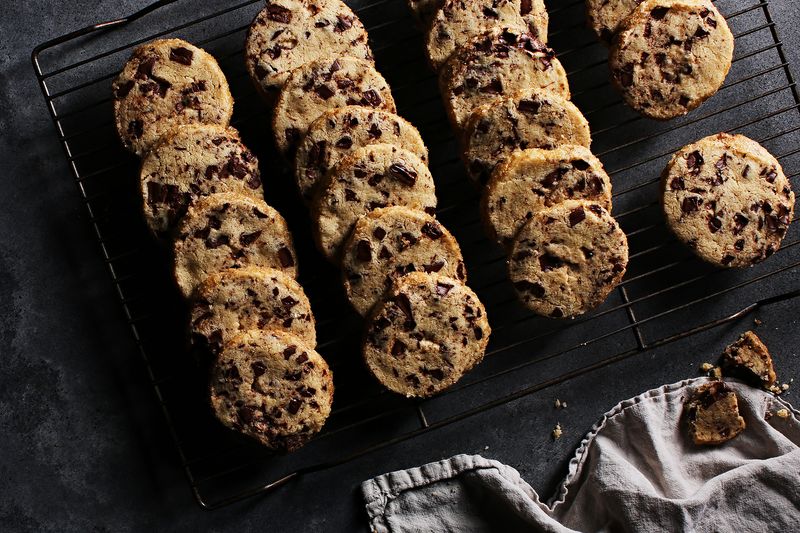
Photo by Jenny Huang
So, that’s that, right? No more questions, everything’s cool, let’s all make chocolate chunk shortbread and live happily ever after. (The woman with the pixie cut in the back row raises her hand.) Hi, hello. It’s me. After testing the original myself, I have a few more thoughts:
The butter and sugar. Roman tells you to use an electric mixer to beat the butter, white sugar, and brown sugar “on medium-high till it’s super light and fluffy, 3 to 5 minutes.” This creaming method is classic with crispy-chewy cookies like—ironically enough—the classic chocolate chip. The goal is aerating the dough, also known as mechanical leavening. This caught my attention here because of the context: shortbread. Which is, by definition, dense and compact. Shortbread recipes hinge on a certain butter-to-sugar ratio—usually 1 stick butter to 1 cup flour—and, significantly, no leaveners like egg, baking soda, or baking powder. To take this a step further, recipes often recommend that you just combine the butter and sugar—not cream them together. Or, they flip the order, so you combine the flour and sugar, then add the butter, almost like pie dough. The Cookies run in the opposite direction, but I still can’t figure out what they’re trying to get away from or go toward.
The flour. This recipe is all flour and granulated sugar, no cornstarch or powdered sugar. Now, if you’re wondering why you would put powdered sugar or cornstarch in shortbread, well, both for the same reason—that crunchy-yet-crumbly, crispy-yet-tender balance that the best shortbreads strike so well. Remember, powdered sugar has cornstarch in it. And cornstarch acts as insurance for that signature sandy texture. The original recipe uses neither, though. Hmm.
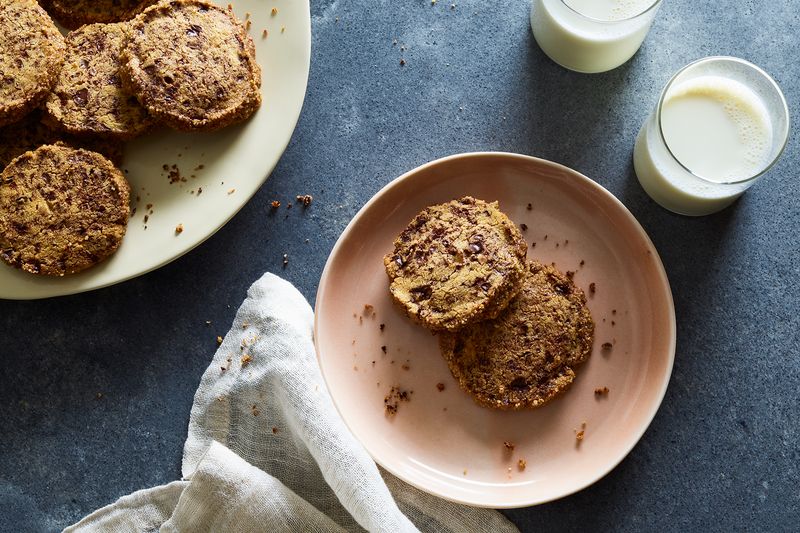
Photo by James Ransom
The chocolate chunks. Roman writes, “The chocolate is cut into chunks to prevent chip congregation” and, as noted above, she wants “chunks, not thin shards.” More and more bakers have been writing about the pros of chunks over chips, which also go by morsels, because chocolate bars and blocks are usually better quality. But the term chocolate chips is its own hot mess. In her book Bravetart, Stella Parks does a deep dive into iconic American desserts, including The Cookies’ ancestors: In the late 1800s, “Chocolate Jumbles,” or grated chocolate cookies, “were all the rage…appearing in countless American cookbooks, newspapers, and magazines.” So, literal chips, not those pristine, uniform morsels we know today. This grating eventually made way for chopping, which eventually made way for buying morsels in a bag, which eventually made way for chopping. Do you see where I’m going here? The next logical step just happens to be my personal preference: finely chopping, or pulsing in a food processor. Think of it as halfway between standard chopping (as Roman recommends) and traditional grating (as the first chocolate chip cookies were). Our contributor Alice Medrich loves this technique for her Chocolatey-est Shortbread. Instead of begrudgingly sharing the same space, like siblings sharing a childhood bunk bed, the cookie and chocolate cuddle and spoon, like lovers. In other words, the chips congregate, turning marbled and streaky. And the shortbread log doesn’t shatter when you slice it.
So, just as Roman updated the famous chocolate chip cookie, I’ve done the same with her famous chocolate chip cookie. It’s still recognizable, just restyled, like returning to school after summer break—tanned, freckly skin, fresh haircut, new outfit. But if you call out “Hey! The Cookies!” they’ll turn around and give you a grin.
Salted Chocolate Shard Shortbread
-
6
ounces dark or bittersweet chocolate chips or chunks -
9
ounces (1 cup + 2 tablespoons) unsalted butter, room temperature -
1/2
cup sugar -
1/4
cup dark brown sugar -
1 1/4
teaspoons vanilla extract -
1 3/4
cups all-purpose flour -
1/2
cup cornstarch -
1
large egg, beaten -
Demerara, turbinado, raw, or sanding sugar, for rolling
-
Flaky salt, for sprinkling
(via Food52)

